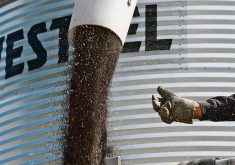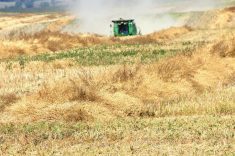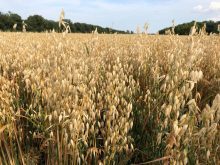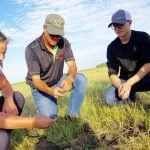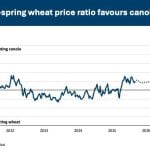The Saskatchewan Forage Council is hoping a new report will help increase public awareness about the economic importance of the province’s forage industry.
The council unveiled a report earlier this month that estimates the direct economic value of goods and services provided by the Saskatchewan forage industry at $740 million a year.
Direct goods and services include the production of hay, processed forages, forage seed, forage exports, silage, sod, turf and pasture and grazing services.
Read Also

Farm Credit Canada partners with major Toronto innovation hub
A FCC parntership with MaRS Discovery District aims to solve technology problems in food supply chains.
The report also suggests that the value of indirect goods and services related to the forage industry is $895 million to $1.9 billion a year.
Indirect goods and services include erosion control, climate change mitigation, pollination, wildlife habitat and the protection or improvement of provincial water resources.
In total, direct and indirect goods and services related to the province’s forage industry are worth $2 to $3 billion a year, the report concluded.
“Forages have traditionally suffered a bit of an identity crisis and as a result, information regarding the economic impact of forages in Saskatchewan has been lacking,” said forage council president Leam Craig.
“The work completed through this (report) brings to light the significant contribution that forages have on both the economy and the environment.”
Council executive director Janice Bruynooghe said an economic impact analysis has been on the council’s radar for several years.
In the fall of 2006, members of the Saskatchewan Advisory Council on Forage Crops conducted a study to assess the state of the industry and emphasize its importance to research funding agencies and related industries such as livestock.
“I guess we all knew innately how valuable our industry was but we didn’t have anything on paper and we didn’t have any numbers to back it up,” Bruynooghe said.
“You need a measure of where you are currently in order to improve the industry, to grow and expand it and to identify where your challenges and opportunities are.”
She said assessing the value of the industry will also help secure stable funding for forage-related research, which has been an ongoing challenge for the industry.
According to the report, forage research funding has been drastically reduced over the past decade and the industry is searching for long-term solutions.
The report cites a 2008 study commissioned by the Canadian Cattlemen’s Association that suggests public funding for forage breeding and research programs decreased to $19 million from $41 million between 1985-98.
The CCA study also suggested that only four forage breeding programs and three active forage breeders operated in Canada in 2007.
Bruynooghe said the industry has developed a solid relationship with the livestock sector and depends heavily on the livestock industry for core research dollars.
Canada’s newly created beef research cluster, announced last month, has also identified forage research as a priority, she said.
“We do work very closely with the livestock sector right now … but I think we need to continue working on that relationship and improving communication so that we can ensure that we’re supporting the (livestock) industry to the best of our ability, whether that be through breeding programs for new forages or whether it be through grazing management strategies.”
The forage council’s report also discussed a producer levy, but Bruynooghe said a levy on forage, hay and pasture is not a priority.
“We are not dreaming in any way of placing a levy on every grazed acre in the province,” she said.
“I honestly don’t see logistically how we could do that and I don’t think the industry is there anyway.… This is not about a levy. It’s more about identifying how the industry can support itself with growth and development.”
The study took 30 months to complete and was funded by industry groups, Saskatchewan Agriculture and Agriculture Canada’s Advancing Canadian Agriculture and Agri-Food program.
Called The Value of Saskatchewan’s Forage Industry – A Multi-Level Analysis, it can be found on the forage council’s website at www.saskforage.ca/joomla/.




